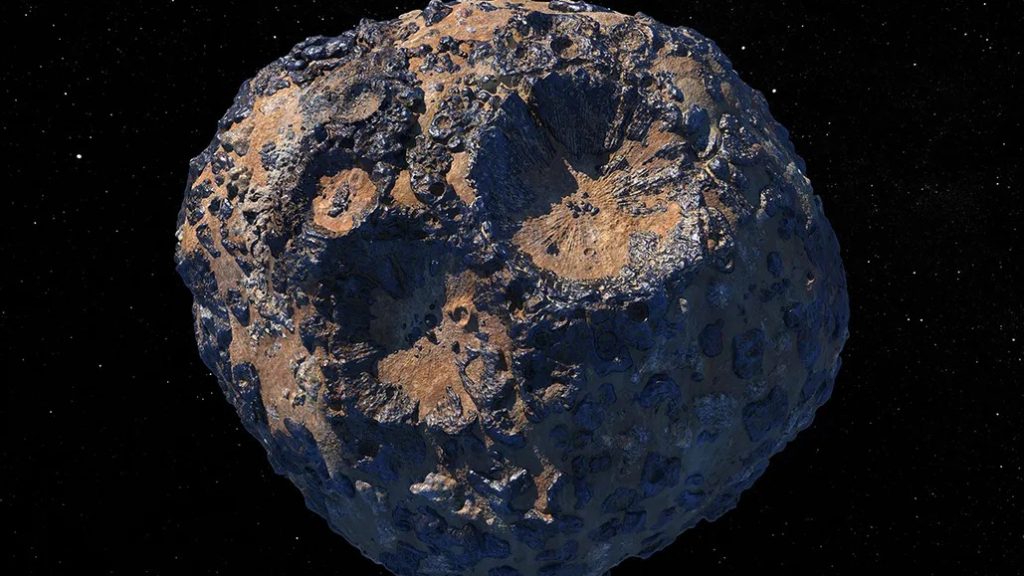Introduction

Asteroid mining, a concept often portrayed in science fiction, may soon become a reality. One such celestial body, the asteroid 16 Psyche, is garnering significant attention due to its estimated worth of $10,000 quadrillion. This astonishing figure exceeds the global economy by an incomprehensible margin. But what makes 16 Psyche so valuable, and what is the potential for future space mining missions? Let’s delve into the details.
Discovery and Naming
Origins and Naming
Asteroid 16 Psyche was discovered by Italian astronomer Annibale de Gasparis on March 17, 1852. Named after the Greek goddess Psyche, the deity representing the soul, the asteroid carries a rich mythological heritage. As the 16th asteroid to be discovered, it is sometimes referred to by its numerical designation.
The Psyche Mission
In October 2023, NASA launched the Psyche mission, aimed at reaching this legendary asteroid. Unlike fictional motivations driven by greed, NASA’s mission focuses on scientific discovery, seeking to understand more about the Earth’s core and the cores of other rocky planets. The mission will provide valuable insights into the violent history of collisions and accretion that shaped terrestrial planets.
Composition and Value
Unveiling the Treasure Trove
The reason behind Psyche’s staggering value lies in its composition. Scientists believe the asteroid consists of a high concentration of metals, including platinum and palladium, which are critical for automotive and electronic industries on Earth. With an estimated surface area of 64,000 square miles (165,800 square kilometers), Psyche is thought to be composed of 30 to 60 percent metal.
A Core of a Planetesimal
NASA experts hypothesize that Psyche could be the exposed nickel-iron core of an early planet, or planetesimal, a building block of our solar system. This theory is supported by radar and optical observations that suggest significant variations in the metal content and color across the asteroid’s surface.
The Journey to Psyche
Distance and Travel Time
Psyche orbits the Sun between Mars and Jupiter, at a distance ranging from 235 million to 309 million miles (378 million to 497 million kilometers). This means it is about three times farther from the Sun than Earth. Reaching Psyche from Earth would take approximately six years, making it a challenging but achievable target for space missions.
Technological Readiness
While NASA is not primarily motivated by the potential monetary value of Psyche, the feasibility of mining asteroids has garnered interest. Philip Metzger, a planetary physicist at the University of Central Florida, points out that the technology for asteroid mining exists but needs further development. Current equipment must be adapted to withstand low-gravity and high-radiation conditions, and must operate autonomously due to the communication delays over vast distances.
Potential for Asteroid Mining
Economic and Practical Considerations
Asteroid mining, though technologically possible, presents significant economic challenges. Kevin Cannon of the Colorado School of Mines’ Space Resources Program notes that bringing materials back to Earth could be prohibitively expensive. Despite this, the materials extracted from asteroids like Psyche could support space exploration and settlement.
Future Prospects
Metals and other resources mined from asteroids could be used to construct large structures and human bases in space. For example, water-rich asteroids could provide hydrogen and oxygen for rocket propellant, facilitating further space travel. The primary obstacle remains funding and the advancement of technology to a level where space mining becomes viable.
Conclusion
Asteroid 16 Psyche represents a tantalizing glimpse into the future of space exploration and resource utilization. With its immense value and potential to reveal the secrets of our solar system’s formation, Psyche is a focal point for both scientific inquiry and economic ambition. As technology advances and interest grows, the prospect of mining asteroids like Psyche could transform our approach to resources and space travel.


